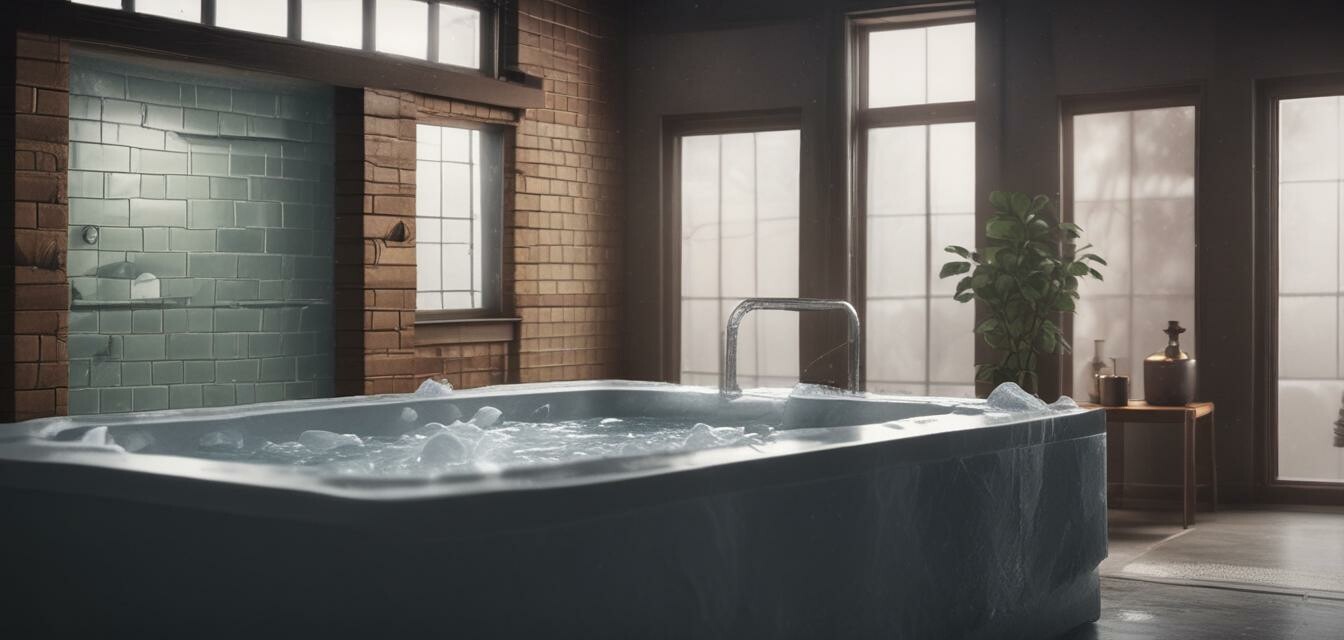
Creativity in ice bath design
- Personalizing your ice bath allows you to connect it to your aesthetic preferences.
- Functional designs can improve your recovery experience.
- Innovative materials and techniques can enhance your DIY project.
- Understanding your space is crucial for effective installation.
Creating a DIY ice bath can be as much about personal expression as it is about recovery. This guide will explore innovative ideas for customizing and personalizing your ice bath setup, ensuring it suits both your functional needs and aesthetic preferences. Whether you're building from scratch or upgrading your existing setup, there are endless possibilities to explore!
Why customize your ice bath?
Customizing your ice bath has several advantages:
- Tailors the experience to your personal needs.
- Enhances the overall look of your home space.
- Can be more budget-friendly than purchasing pre-made models.
- Allows for creativity in design and functionality.
Design considerations for your DIY ice bath
When designing your ice bath, consider the following aspects:
| Aspect | Description |
|---|---|
| Space and Location | Assess how much room you have and where to place the bath for accessing water and drainage. |
| Materials | Choose materials that are both aesthetically pleasing and durable for cold water exposure. |
| Insulation | Utilize insulating materials to maintain cooler temperatures for longer periods. |
| Drainage and Refilling | Consider easy solutions for draining and refilling, which is vital for maintenance. |
Innovative design ideas for your ice bath
1. Natural Elements
Incorporate natural materials such as wood and stone. A wooden tub can offer a rustic charm and create a calming atmosphere.
2. Color and Theme
Choose a color palette that reflects your personality. Consider painting or staining your tub or adding decals to enhance its look.
3. Multi-functional Features
Explore options for your ice bath to double as a seating area or a lovely planter during warmer months.
4. Lighting Options
Integrate LED lights around your ice bath to create an inviting ambiance. This can enhance the experience, particularly in evening sessions.
Materials to consider for your DIY ice bath
Choosing the right materials is crucial for durability and aesthetics. Here are some options:
- Fiberglass: Lightweight and customizable. Great for versatile designs.
- Wood: Offers a natural look but requires maintenance to resist water damage.
- Plastic: Affordable and easy to manage, but may lack aesthetic appeal.
- Metal: Provides a robust, industrial look, but may require insulation for temperature maintenance.
Incorporating functionality into your ice bath
Beyond looks, functionality enhances your ice bath experience. Consider these features:
| Feature | Description | Benefits |
|---|---|---|
| Heating Element | A heater can be installed for adjusting water temperatures. | Allows for versatility in use throughout the year. |
| Covers | Covers prevent dirt, debris, and heat loss. | Enhances maintenance and saves energy. |
| Thermometers | Thermometers help monitor water temperatures. | Ensures optimal cooling for an effective recovery session. |
| Additional Accessories | Consider adding cushions for comfort or even aesthetic details like art and decor. | Increases usability and visual appeal. |
Conclusion
The creativity you pour into designing and customizing your ice bath can result in a unique space that reflects your personality and recovery needs. By considering functionality and aesthetics, you can create an engaging and effective environment for your recovery sessions. Explore our category on DIY tips and techniques for more inspiration and resources.
Tips for beginners
- Start small and build your design over time.
- Research various materials and their benefits before choosing.
- Involve family members in the design process for shared input.
- Don’t be afraid to experiment with colors and textures.
Pros
- Personalized design enhances enjoyment.
- Can become a beautiful element of your home.
- Functional designs improve recovery sessions.
Cons
- Requires time and effort to build.
- Potential costs can add up if not managed properly.
- Maintenance and cleaning are necessary to prevent deterioration.
